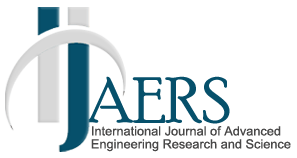Situational analysis of exogenous intoxication in the state of Amapá, between 2015 and 2017 |
| ( Vol-7,Issue-11,November 2020 ) OPEN ACCESS |
| Author(s): |
Hilton José Vaz, Lidiane Assunção de Vasconcelos, José Natanael Gama dos Santos, Amanda Silva Arenhardt, Amanda Maria de Almeida Moreira, Elenilda da Conceição Ribeiro, Mussadiq Hussan, Jéssika Lima Silva, Natália Pinto Assunção, Cibele Maria de Almeida, Carolina Marinho de Pina Carvalho, José Jorge da Silva Galvão, Diego Leite Cutrim, Tacilane do Socorro Rocha de Almeida, Jéssica Silva Sousa, Laura Caroline Ferreira Cardoso, Ana Clara Lima Moreira, Nicole Pinheiro Lobato |
| Keywords: |
|
Exogenous intoxication, Suicide, Notifications |
| Abstract: |
|
Exogenous intoxication is a collection of noxious effects represented by laboratorial and clinical manifestations that disclose the organic disproportion produced by the interaction of one or more toxic agents with the biological system. The aim of this work is to perform a situational analysis of exogenous intoxication in the state of Amapá during the period of 2015 to 2017. The form of study is retrospective with quantitative approach. The data sources used were DATASUS and the Brazilian Institute of Geography and Statistics – IBGE. Papers published in journals, BIREME database, LILACS, SciELO and data from the Ministry of Health were an additional sources. The results showed that in the period from January 1, 2015 to December 31, 2017, the total number of reports of endogenous intoxication by municipality of residence was 60 cases, and Macapá was the municipality that contributed with maximum notifications which is 86.6%. The most prevalent age group for exposure to toxic agents is the group of young adults between 20 and 39 years of age, with an average of 50% of the total cases with a predominance of female representing 53%. Among the substances that mostly caused these type of poisonings are the use Raticide with 30% and the use of drugs with 18%. It is concluded that exogenous intoxications are a risk to the public health and need to be minimized with more effective public policies by reducing the exposure of groups of risks that lead to accidents or that favors suicides. |
| Article Info: |
|
Received: 7 Oct 2020; Received in revised form: 16 Nov 2020; Accepted: 18 Nov 2020; Available online: 27 Nov 2020 |
|
|
| Paper Statistics: |
| Cite this Article: |
| Click here to get all Styles of Citation using DOI of the article. |
- Track Your Paper
- editor.ijaers@gmail.com
- ISSN : 2349-6495(P) | 2456-1908(O)



Advanced Engineering Research and Science